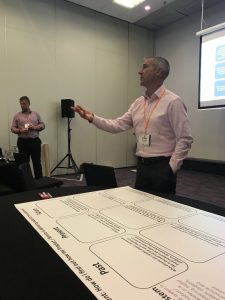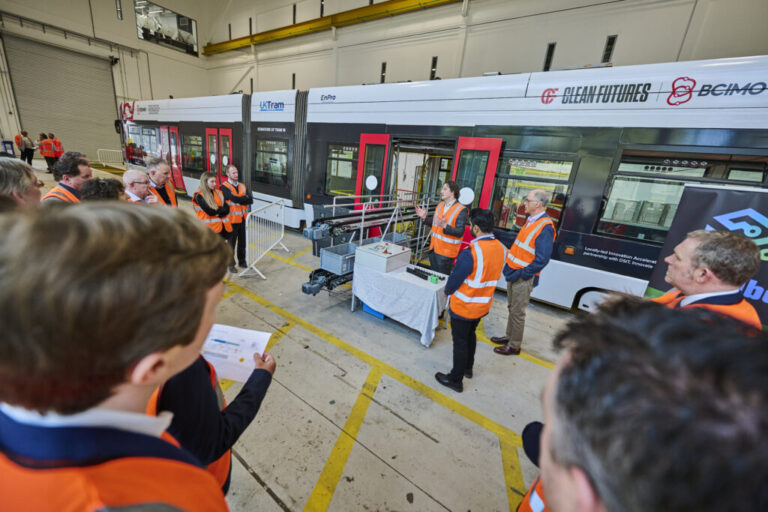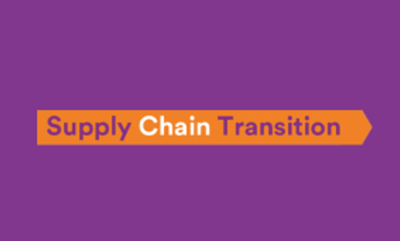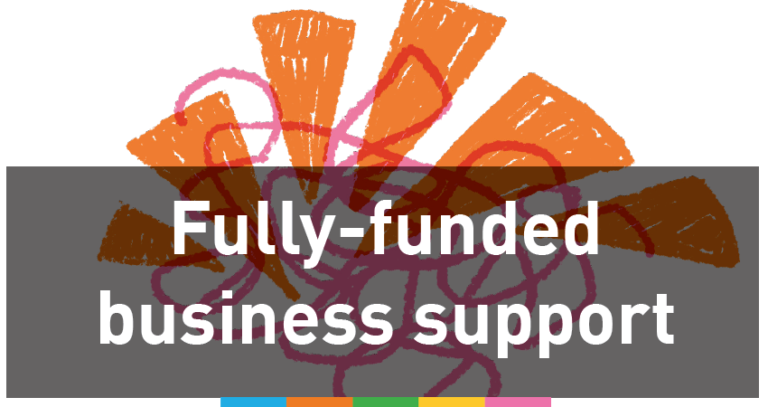“In order to innovate, you need to collaborate. In order to collaborate, you need trust.” James Elliot from Innovation Xchange UK Limited (VenturefestWM 2019 headline sponsor) began his workshop by introducing this core principle, and that to build trust, we must all have a shared understanding. He also outlined that equally fundamental to innovation is an organisation’s ability to build capacity to connect to other organisations, and then deliver the results of their collaboration.
Innovation Xchange see innovation as a practical activity that needs a systematic approach. James introduced their innovation process, which consists of Challenge Articulation stage, the Idea Articulation stage and the Implementation stage. For this workshop, packed with business people, entrepreneurs, researchers and students, James focused on the first stage, which he argued was the most integral stage: Challenge Articulation.
Defining a challenge as the ‘gap between what you can do and what you would like to do’, the idea of intention definition and context was introduced – with each person defining the intention, or ‘what they would like to do’, from their own perspective. The importance of gathering multiple perspectives, and the context for those perspectives, was highlighted, enabling the gathering of a list of assumptions, constraints, and gaps in knowledge which will eventually define the challenge (after each have been questioned with a ‘why’ five times!) The more clearly a challenge is articulated, the better it can be addressed, and innovation has a framework within which to flourish.
During the workshop, an interactive group activity was organised and led by Russ Noble, also from Innovation Xchange. He asked each group to fill in the ‘Nine Windows Framework’ (as shown below)

The Nine Windows Framework for Challenge Articulation

Russ Noble guiding the audience through an interactive exercise
Taking either a real or hypothetical product, each group found it fascinating to work through the questions, and found similar challenges in innovating among the diverse businesses around the room. Among them were:
- The gap between academic researchers and industry drivers that can make productive, innovative outputs difficult, particularly in terms of financial feasibility for practical implementation.
- Rigid regulatory frameworks increasing barriers to entry for entrepreneurs in terms of financial costs.
- Difficulty in harmonising the interests of different stakeholders
Taking away ambiguity and uncertainty in defining the challenge to be overcome, while using dedicated and creative people to use the knowledge generated by this process showed how Innovation Xchange have been able to support many businesses to successfully bring new products and processes to the market.
At a time where more emphasis is being put on demand and challenge-led innovation, this type of more systematic approach to identification and articulation of challenges will be of great value.
To find out more about the work of IXC you can visit their website here.
(Author: Hana Chua, University of Warwick; Co-Author: Pam Waddell, IAWM)





